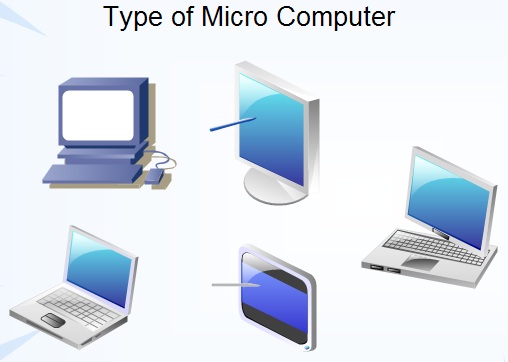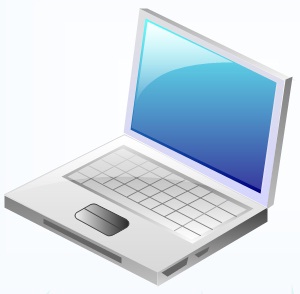What is microcomputer? Definition
Definition: Micro Computer is a small computer. Your personal computers are equivalent to the microcomputer. Mainframe and Mini Computer is ancestor of microcomputer. Integrated Circuit fabrication technology reduces the size of Mainframe and Minicomputer.
Technically, a microcomputer is a computer in which the CPU (central processing unit, the brains of the computer) is contained on one single chip, a microprocessor, input/output devices and storage (memory) unit. All these components are important for a proper working of microcomputer.
We’ll be covering the following topics in this tutorial:
Types of Micro Computer
Most workstations are also types of micro computer, for the same reason, although some personal computer
is as fast as the fastest workstation. And a computer used by more than
one person (a multi-user computer) is still a microcomputer as long as
it has a microprocessor for its CPU.

Notebook
Notebook is the smallest microcomputer, which can be ultra-mobile3 inches thick with less than 3 pounds lightweight and smaller than a briefcase, allow for easy setup in a room. A notebook can be effectively connected to the Internet ISP via a cable or Wi-Fi.
Laptop
Laptop microcomputer is bigger than the notebook computer powered by a battery and designed for low power consumption, which can be
smaller than a briefcase. Although laptops and desktop computers have
same capabilities. A laptop also has a thin display screen with attached
keyboard and a touch pad used for navigation.
Desktop
Desktops are personal computers and bigger than notebooks and laptops. These microcomputers consist of the system unit, keyboard and monitor. Desktop microcomputers are cheaper than laptops or notebooks. Unlike a notebook, which is ultra-mobile, a desktop micro computeris stay at one location. The desktop microcomputers are more reliable than notebooks and laptops and easy to repair.
Components of Microcomputer
All Microcomputer are based on same principle like having CPU for processing data ,memory for storing data and input output devices , but many types microcomputers are available in market .This difference in microcomputer is due to the use of various types of data bus and address bus. Data bus and address bus is used for data and address supply. Capacity is measure in form of bits like 32 bit data bus or 64 bit data bus.
Microprocessor: Microprocessor has two parts arithmetic logical unit and control unit. All these units help to system to perform calculations, execution of command and handling the control of devices.
Arithmetic logical Unit: Arithmetic logical unit is calculation unit in microcomputer. It is also known logical unit. It performs addition, subtraction, multiplication, complement or many more operations. To perform this calculations ALU unit used registers, multiplexer, adder, half adder or flags. Flags like carry flag, zero flag, status flag, overflow flag etc.
Control unit: Control unit controls the execution and sequence of instructions. CU receive instruction from devices ,convert the instruction into a specific format to access the location of data in memory and give the control to ALU for performing action on specific instructions. Control unit control the buses, registers, mux and circuits.
Memory unit: Memory unit control inflow and outflow of data in memory by using many memory management techniques like FIFO, LIFO, OPR, LRU etc.
In microcomputer we have two types of memory 1) Volatile and 2) Non-volatile.
Volatile: Memory that stores data for short time of period till the light is switch on.
Non-Volatile: Memory that stores data permanently.
RAM (Random Access Memory): RAM is also known as Physical memory. RAM is volatile memory .It is faster than hard disk. RAM is placed between CPU and Hard-disk. To process any data, first it loaded into RAM from hard-disk and then CPU access it.
ROM (Read Only Memory) : Read Only Memory has permanent data storage. Once the data has written on it, content will not lost if power turned on or power turned off. Boot record is written on it.
When we switch on system, the boot record loaded from ROM and when system turned off, it stores on ROM.
Input /output devices: Through buses peripheral devices communicate with CPU. Control buses used clock signal to activate the devices. Address buses used by processor to fetch the opcode or operand for process. Data bus is used for read and writes operation on data.

Comments